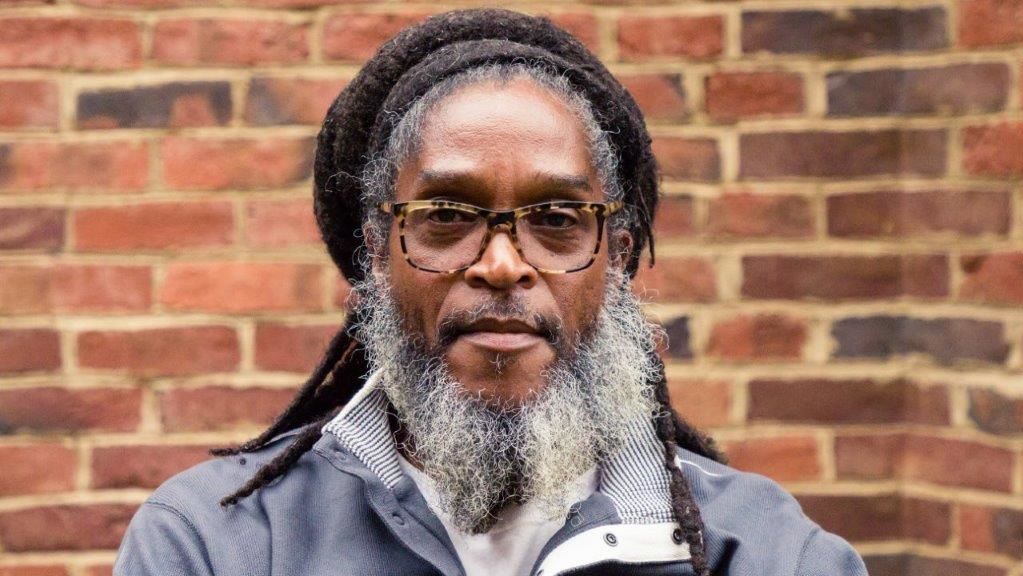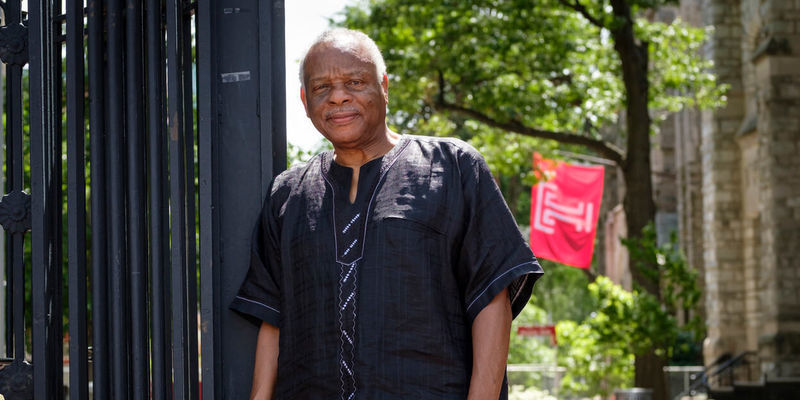Untangling the controversy around critical race theory
Charles A. Price, an associate professor at the College of Education and Human Development, discusses the origins of critical race theory, how it’s taught to students and how it’s been politicized.

In the past few months, critical race theory (CRT) has shot to the forefront of public discourse in the U.S., appearing in countless headlines and sparking intense debates across the country about its significance and use.
For Charles A. Price, an associate professor in the Department of Policy, Organizational and Leadership Studies in the College of Education and Human Development, the controversy demonstrates not only how CRT has been politicized but also a lack of understanding of the theory itself.
“We often get into discussions about race that go nowhere. And part of the reason they go nowhere is because we haven’t clearly defined what it is that we’re talking about,” Price said. “We haven’t declared a perspective that we’re coming from.”
We spoke with Price about the origins of critical race theory, how it’s taught and why it’s important.
Temple Now: What is critical race theory and how was it developed?
Charles A. Price: Critical race theory can be thought of as a paradigm that goes all the way back to the Frankfurt school of critical theory. What the theorists were arguing is that, in order to understand modern society, you have to pay attention to the power relationships among members and groups. First we got critical legal studies, which challenged the idea that the law is fair and impartial. And the reason political legal theorists started raising these questions is because they started asking themselves, “If the law is fair, if the law is impartial and unbiased, then why do we see disparities in how sentences are rendered and justice is meted out?” They concluded that the law is not fully impartial and that to help it work more effectively, we need to pay more attention to the power relationships at play.
As that tradition developed there were other scholars who came along and said, “Wait a minute: it’s not just power, it’s also race. We need to go a step further and add race because race and power in the United States are inseparable.” One of the key figures in critical race theory was civil rights attorney and scholar Derrick Bell. He and some other legal scholars were beginning to feel that all the gains made by the civil rights movement were slowly being eroded and the U.S. was moving from relationships of domination—where racism is overt—to a hegemonic system. The domination is still there, but it’s been reworked in a way that now kind of boils down to people agreeing to their own oppression. The idea is that race relations are much more complex than they were before Brown v. Board of Education and we need analytic tools to help us understand that. That’s where critical race theory comes from. It helps us understand the disparities in the legal and justice system, then apply that model much more broadly.
TN: How have you introduced CRT to your students and why?
CP: Years ago, when I was at the University of North Carolina at Chapel Hill, there was a lot of interest among faculty and students about teaching more courses on race. I thought I would develop a course for first-year students that would introduce them to race, so they could begin thinking and talking intelligently about it and take what they learned and apply it over the course of their undergraduate career. What I figured out was that to help people really understand race and explanations for race, you need as many models and perspectives as possible, not just one. Because that is what really gets us in trouble all of the time—people are operating from the perspective of a single standpoint and think that it somehow covers the complexity of race. It doesn’t come close.
I developed what I call a multidimensional approach to race, which means you have to consider a minimum of three perspectives. One is how race works at the level of the individual. I don’t know you and I don’t know how you grew up. You may have grown up in a community where race isn’t important, where you don’t understand race. Compared to me: I grew up in a place where race is everywhere. How do you explain the fact that two people, perhaps the same age and with similar backgrounds, are very different? I argue that you have to try to understand the individualized experience and not assume that we all have the same understanding of race. Then there’s a historical component. There’s nothing you can do in terms of understanding if you don’t understand the things that happened that got us to this point. Next there’s what I call the structural or systemic perspective, which deals with how race operates outside of the individual. For instance, how credit or loans can take on a racial distribution. You need a structural analysis to understand how these things become patterns over time. And then there’s what I call the ethnographic perspective, which is more for college students: let’s read material to get a sense of how these three things work together and see how scholars have tried to depict what race looks like in a neighborhood or community. I would introduce students to three, sometimes four different structural and systemic models and critical race theory was one of them.
TN: CRT has existed for more than 30 years. Why has it become so divisive now?
CP: It’s become a tool and a political struggle. In and of itself, critical race theory is not divisive. It becomes divisive when people use it for particular kinds of political ends. CRT has an activist orientation and partially grew out of this understanding that social movements can generate change. And some conservative activists have come up with very effective strategies for taking the ideas and language of their opponents and using it against them.
Something that becomes popular can also become diluted. In a way, CRT is suffering from its own popularity. People are using it inappropriately and incautiously, making generalizations and claims they probably shouldn’t make. And critics are pointing to the worst examples of critical race theory applications rather than the best, and rather than considering its original purpose.
TN: Is CRT important? What are some of the other theories we could consider alongside it?
CP: I think it’s important. But its importance has been overblown by its proponents and by its critics as well—but as you can imagine, for very different reasons. There are other frameworks that are much more compelling and empirically oriented, and we just don’t know about them outside of the academy. Even in the academy, you’re not going to learn about these unless you take a sociology or anthropology class or maybe study in a political science department. Race formation theory, for instance, in my mind is much more theoretically coherent and specific about how it explains and deals with race. It’s much closer to a model than critical race theory. CRT isn’t a single theory; it’s a group of perspectives under one big umbrella. Race formation theory, by contrast, wants you to be very specific about economic and political conditions and the historical backdrop to these factors. Because the way race plays out in, say, Philadelphia is probably going to be different from in a rural community in the south or a southern city like Atlanta.
TN: Have there been similar controversies to the one around CRT before?
CP: This is just another encounter on a much larger battlefield. Some people call these the culture wars and they have only intensified. There was a fierce battle back in the late ’80s and early ’90s over Afrocentrism. There were arguments about whether or not Cleopatra was Black. And a bigger intellectual argument revolved around the controversial work Black Athena by Martin Bernal. He argued that the early Greeks drew a lot of their understanding of the world from African philosophers and just gave these things their own twist. It started this firestorm about how to make sense of Western civilization and what the impact of Africa, Africans and African-centered people was on Western history.
Another fight was about The Bell Curve, a book by Charles Murray and Richard Hernstein. They wrote that the way America works is you get assigned to the position that your intelligence permits. So, if you are in an occupation or a field that doesn’t require a degree—let’s say a janitor—Murray and Hernstein’s argument is that those folks are janitors because they’re not that smart. That’s how society works and how it ought to work. Look at all these doctors, lawyers, bankers and CEOs. They are where they’re supposed to be because they are more intelligent. And it’s no coincidence that most of them are white, and that the people on the lower rungs of society are Black. Murray and Hernstein argued that rewards are distributed in society as if on a bell curve. And they used that whole statistical idea to camouflage what was essentially a pseudo-scientific, racist argument. It was part of the conservative pushback against gains of the civil rights movement.
Right alongside that were arguments about political correctness that were simply efforts to do exactly what they’re doing now with critical race theory: turning the language and ideas of their opponents on themselves. All of those people who were saying, “This is how I want you to understand me. This is how I want you to talk to me.” What they said was turned into political correctness. The political correctness argument preceded the one on CRT, but it’s also very much in line with what we’re seeing right now.
—Edirin Oputu


